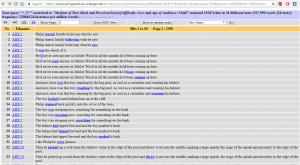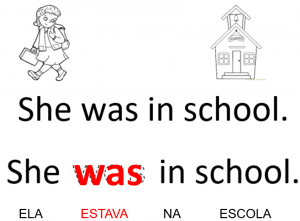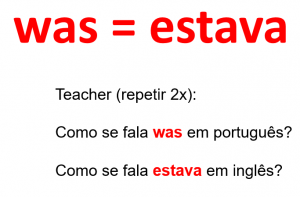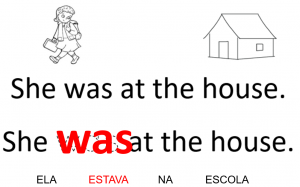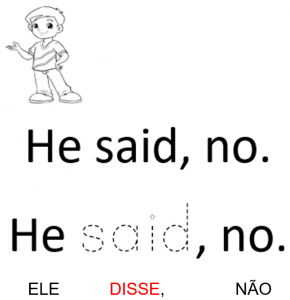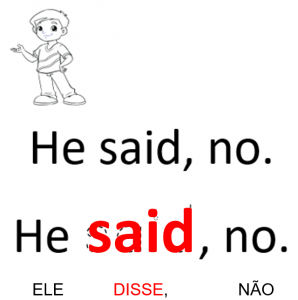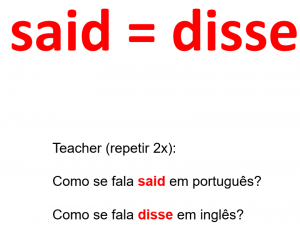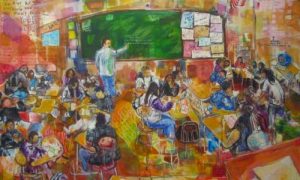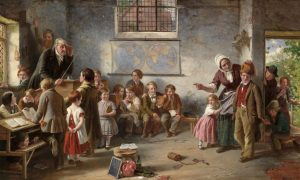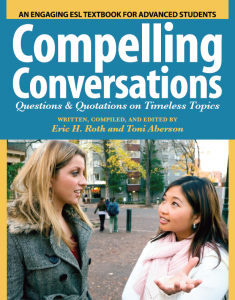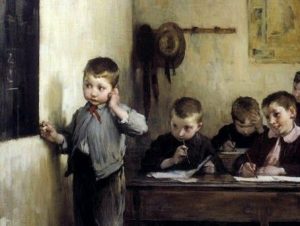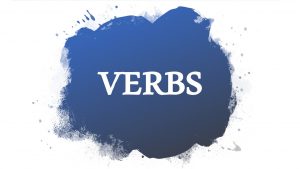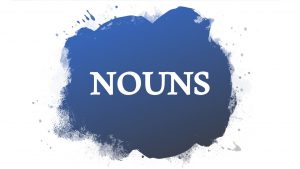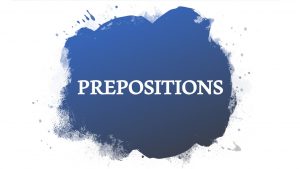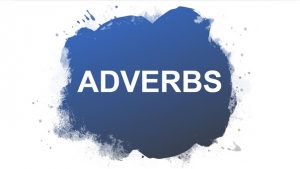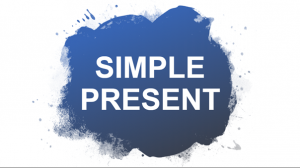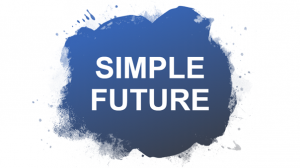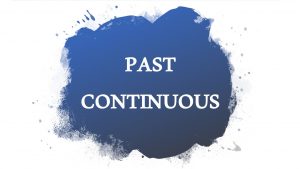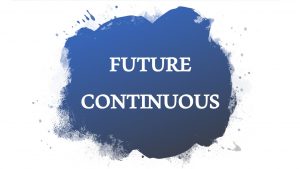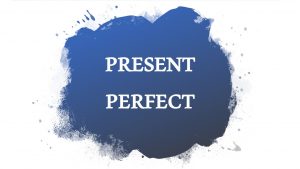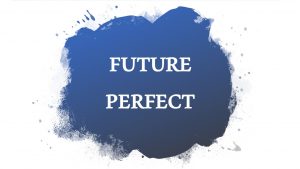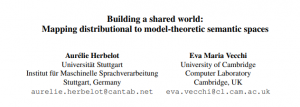The two main authors
According to Jack C. Richards and Theodore S. Rodgers (1986), to understand the difference between method and approach we need to assess the history of language teaching methods. It lays out a context for the analysis of present-day Method, Approach, Design, and Procedure. Given the historical point of view, arguments on how to teach foreign languages have led to the reflection of what modern methods are based on. The shift towards oral proficiency, rather than reading and writing, is a good example of one of the changes that occurred throughout the history of language teaching.
Linguistic or psychological theories have been used to advance a practical or more philosophical level of a second language (throughout this article the term ‘second language’ will be addressed as L2 and ‘first’ or ‘native language’ as L1) teaching method; in some others, the practices in the classroom have led to these advancements. Many efforts have been made to abstract the nature of a method. Some investigated the association between theory and practice. While others looked upon applying procedures; these forged the branch of Second Language Acquisition: one of the main fields of applied linguistics. (Richards & Rodgers, 1986, pp. 1-14).
Method, Approach, Design and Procedure
Richards and Rodgers (1986) review that almost all language teaching methods follow the same logic, therefore a thorough investigation into their essence is necessary. The whole is called the Method and is divided into three categories, approach, design, and procedure.
Approach is the philosophical branch of the method that accounts for cognition. It allows one to consider the conditions of language learning and the nature of language.
Design represents the general aims of a method: the syllabus, exercises, ways of teaching, educational material, as well as the roles of teachers and students.
The third and final category is Procedure. This pertains to practices, behaviors, and techniques administered and observed in the classroom. Consequently, a method, that contains these aspects, generalizes a strategy for teaching L2 in the classroom (Richards & Rodgers, 1986, pp. 14-29).

Difference between Method and Approach – Learning Theory
Furthermore, Richards and Rodgers (1986) emphasize that in learning theory, the preoccupation is with the central learning processes and the circumstances that are believed to promote language learning. In language theory, there is great interest in a model of linguistic competence. A concern with the basic aspects of linguistic structure, and an application of language.
Teachers can develop their own teaching techniques, with a knowledge of language and a theory of learning. They can continually change, vary, and modify the forms of teaching given the students’ reports, their reactions to the educational practices, the teacher’s perception of learning, the lack of time for lessons, the students absorptions of the tasks, etc. Teachers who hold a similar understanding of approach can apply different concepts within the procedure.
Therefore defining Method, Approach, Design, and Procedure, comes to: approach does not define procedure; theories do not command procedures. Design links approach with procedure (Richards & Rodgers, 1986, pp. 18-19).
The Nature of Language and the Nature of Language Learning
Richards and Rodgers highlighted that there is a minimum of three contrasting theoretical views about the nature of language and the nature of language learning. The first is the structural view, a view in which language is treated as a system of elements that intrinsically encode meaning. The second is the functional view, in which the emphasis is on verbalization instead of grammar. The third, the interactional view, focuses its efforts on the communication between people (Richards & Rodgers, 1986, pp. 16-17).
According to Richards and Rodgers, despite the fact that some theories of the nature of language may support a teaching method. Many other methods come from a theory of language learning. A theory of learning that supports an approach understands the psycholinguistic processes connected to language learning and the conditions that encourage learning. For example, Process-oriented theories are created by “habit formation, deduction, assumption, hypothesis, testing and generalization” (Richards & Rodgers, 1986, p. 18). The theories that focused on the environment in which language learning occurs and the nature of human beings are called condition-oriented theories (Richards & Rodgers, 1986, p. 18).
Many views have come across L2 teaching methods. In 2009 Patsy Martin Lightbown and Nina Spada describe the importance of the inborn knowledge of the students. Other authors treat the role of the environment as crucial. While some others seek to combine the native input of the students and the environmental aspects in a description of how the acquisition of the L2 develops. Combining these two aspects, many theories of the nature of language learning consider that the acquisition of L2 is similar to the acquisition of the L1 (Lightbown & Spada, 2009).
Difference between Method and Approach – Method requires Approach
According to Richards and Rodgers, forming a method requires an approach to organize a design. Design is where language content is chosen and organized in a syllabus. According to the draft of Sinclair and Renouf for “a syllabus to have an important role in education, it should […] be as independent of linguistic or pedagogical theory as possible, and the theoretical background should be seen primarily as a vehicle for the clear expression of the syllabus” (Sinclair & Renouf, 1988). The syllabus is where the tasks and teaching activities are created; it is also where the roles of students, teachers, and educational material take place (Richards & Rodgers, 1986, p. 20). Method, Approach, Design, and Procedure all have to thank syllabus for its major role.
Difference between Method and Approach –Syllabus
The syllabus can, according to J. D. Brown (2006), be formed in many different ways. The Structural syllabus concentrates on grammatical forms (the Classical and the Grammar-Translation Methods are perfect examples). Both maintaing its base on the idea that grammatical structures are essential for the learning of an L2. It selects exercises and suitable texts, starting with those structures considered easier to the most difficult. The Situational syllabus focuses on the issue that language is always found in context or in a special situation (the Direct and Audio-Lingual Methods fall into this category).
Consequently, their texts and books are structured around situations, something quite different from the Topical syllabus. Which seeks to structure its texts and books around topics. The Functional syllabus, as the name suggests, focuses on functions, which are the things we usually do with language, such as ordering something or describing the things around us (the Communicative Language Teaching Method is a good example).
There is also the Notional syllabus, the Skill-based syllabus, and the Task-based syllabus, which are based on distinct day-to-day activities that students need to perform. These activities can include anything from taking the bus to go to the bank (a perfect example for this syllabus is the Task-Based Language Teaching Method). Syllabuses are sometimes combined, and this occurs for example between the Situational and the Topical syllabuses (Brown, 2006). Finally, the Lexical syllabus, which represents a drastic shift towards vocabulary, is used in the classroom environment.
Syllabus According to Sinclair and Renouf
According to Sinclair and Renouf in their draft paper A lexical syllabus for language learning, there is great importance in the number of words a student of an L2 knows. It is sometimes used as a great measurement value of progress in the L2. They stated that the approaches taken to vocabulary building have not been methodical in their efforts to establish goals.
Correspondingly, a lesson, that does not use lists for memorization, focused on L2 vocabulary building, would not be able to avoid syntax. It is particularly hard to teach, simultaneously, a syllabus organized for both grammar and lexis. A lexical syllabus, in the beginning, does not inspire vocabulary building. But rather only motivates students to practice the words they already know by bringing them together with other words. The importance of frequency is crucial to L2 teaching, but it cannot only focus on the most common words (Sinclair & Renouf, 1988).

Exercises
Richards and Rodgers also review that the exercises supported by a method serve to differentiate it from other methods. Exercises planned to center on the advancement of certain psycholinguistic processes in language acquisition will vary from those aimed for grammar mastery. This observation shows how procedures are important to define an entire method. The classroom exercises that had grammar as its center are distinct from those that have communication as its center. The blueprint of an educational system is remarkably connected to how students are seen. A method is regarded by what it asks from the students during the learning process.
This is perceived in the level of influence that students may have on others, the conception over grouping. The exercises that are performed, the level of authority over the content, and naturally how the students view the course. Types of exercises in methods include the central categories of learning and teaching that the method supports. Some methods suggest different dispositions in the classroom, an oral drilling method requires a contrasting arrangement of students rather than a method with “problem-solving/information-exchange activities involving pair work” (Richards & Rodgers, 1986, p. 22).
Teacher Performance
The performance of the teacher will fundamentally consider both the objectives of the method and the learning theory that asserts the method. The types of functions that teachers are assumed to perform are what links them to which method they are using. Teachers’ roles in methods can be analyzed on many different levels and these levels vary. They can be examined by the level of control the teacher has over the development of the learning process.
From the teacher’s accountability, to the social structure that involves learners and teachers. Methods fluctuate with regards to the role of the teacher. Some methods posit that the teacher is the root of all knowledge and guidance, while other methods illustrate the teacher’s role as a facilitator, consultant, and force. Some even try to make it impossible for a teacher to commit a mistake, binding the teacher to an educational material which follows lesson plans that can only be performed in a specific way (Richards & Rodgers, 1986, pp. 22-24).
Educational Materials
Educational materials is the final issue addressed in the level of Desing. These define content, state or suggest the amount of time and attention that exercises require to be finished. And set daily goals that together represent the aim of a syllabus. Educational materials that are designed on the premise that learning is initiated and observed by the teacher in the classroom can be quite different from those designed for a student’s self-instruction or peer instruction.
Certain methods demand the educational use of available materials, while others mandate different patterns of action in the classroom. Some prevent classroom interaction, and others are neutral about interaction in the classroom. Several materials require remarkably competent teachers with near-native capability in the target language, while others accept teachers who themselves barely finished an advanced English course (Richards & Rodgers, 1986, pp. 24-25).
Procedure
Procedure is the last concept in a method according to Richards and Rodgers. It is the level to which the actions and practices held by a method are applied within the confinements of the classroom. Procedure has three aspects.
The introduction of the new language and how it is supposed to be conducted during language teaching activities such as “drills, dialogues, information-gap activities” is the first aspect (Richards & Rodgers, 1986, p. 26).
The exercises proposed are the second aspect for the study of the L2.
How responses and assessments are dealt with regarding the students’ abilities in the L2 is the third aspect.
In essence, procedure centers on the way a method manages the assessments, the exercises, and the display of the L2 in the classroom. It is the level that considers what teachers all over the world go through every day (Richards & Rodgers, 1986, p. 26).

A Handful of Methods
Richards and Rodgers suggested that only a handful of methods are clear regarding all the aspects mentioned before. Methods can appear under any circumstances; a good example is one where a teacher comes up with a new technique (in the level of procedure) that seems to be doing well in the classroom and afterward the teacher translates these findings into an approach that describes or explains the theoretical aspects of these new techniques. Other methods were created the other way around. First, the theory of language or language learning was established, and later the design was created as well as the techniques within procedure (Richards & Rodgers, 1986, p. 29).


